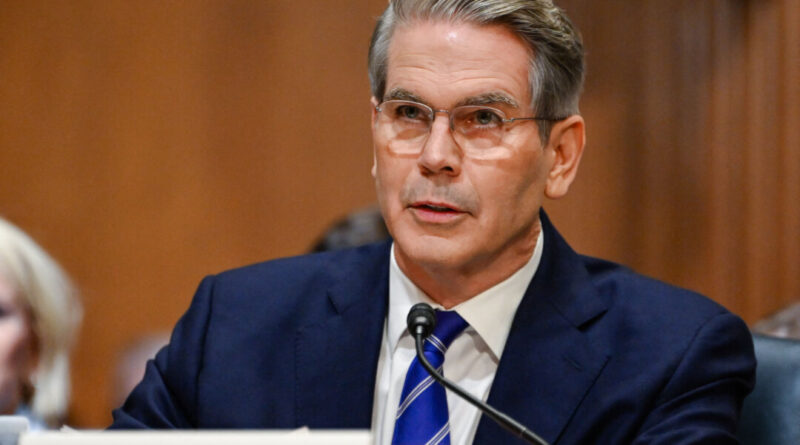US Treasury Sets Plan to Borrow $1.665 Trillion in the Coming Six Months
Investors are now turning their attention to the Treasury’s borrowing strategies.
According to the Treasury Refunding Estimate, the department anticipates borrowing $815 billion from January to March, which is $9 billion less than the previous forecast in October, largely due to an increased beginning-of-quarter cash balance.
For the period from April to June, the Treasury expects to borrow $123 billion.
The Treasury reported it borrowed $620 billion in the October to December quarter, which was $74 billion more than initially projected. Moreover, it concluded this period with a cash balance totaling $722 billion.
As the new Treasury chief takes charge, market observers have been closely monitoring whether there will be shifts in policy, such as transitioning from short-term debt issuance to longer-term maturities and aiming for a reduced cash reserve. Such changes could introduce volatility into the bond market.
A detailed analysis of the Treasury’s plans for bond and note sales will be available in its upcoming Treasury Refunding report, scheduled for publication on February 5.
“I believe there is a possibility of entering a favorable reflexive cycle on debt costs because financing at the front end has not been prudent,” he commented.
Republican lawmakers, such as Sen. Bill Hagerty (R-Tenn.), suggested that Yellen relied heavily on short-term debt instruments as she anticipated the Federal Reserve would lower interest rates before issuing longer-maturity bonds.
“We never attempt to time the market,” Yellen stated to Hagerty.
The new Treasury administration’s challenge involves managing the maturing short-term debt.
While Yellen issued trillions in new debt, focusing heavily on T-bills, Bessent will now need to refinance a considerable amount of maturing debt amidst a high interest-rate environment.
The domestic demand has been weak over the last couple of years, leading to foreign investors contributing significantly to Treasury purchases.
“As the Federal Reserve began to increase interest rates in March 2022, foreign private investors ramped up their Treasury purchases, drawn by the more attractive yield levels,” remarked Torsten Slok, chief economist at Apollo, in a recent email to The Epoch Times.
The benchmark yield for 10-year Treasuries is approximately 4.56 percent, while the 1-year yield stands at 4.2 percent and the 30-year bond yield is at 4.8 percent.
These developments are occurring against a backdrop of escalating national debt.

The national debt clock displayed at a bus station in Washington on Jan. 2, 2025. Madalina Vasiliu/The Epoch Times
Recently, the Federal Reserve indicated that interest rates may remain elevated for an extended period. The December Summary of Economic Projections revealed the median policy rate is expected to decrease twice from the initial estimate of four. Inflation has remained a primary factor influencing the U.S. central bank’s more aggressive monetary policy stance.
In conjunction with these borrowing challenges, Bessent will also have to contend with the debt ceiling. Before Bessent’s appointment, Yellen had already started implementing extraordinary measures to avert a U.S. default, such as postponing investments in government retirement funds and utilizing the Federal Reserve’s general account.
The predicted X-date—the point at which the Treasury will run out of options—is expected to occur around June or July.
“This provides Congress and the new president with the opportunity to resolve this self-created predicament, likely by the summer months,” commented Lawrence Gillum, the chief fixed income strategist at LPL Financial, in a note to The Epoch Times. “However, once these measures are exhausted, the government risks defaulting on its obligations unless lawmakers and the president agree to raise the ceiling on the U.S. government’s borrowing limit.”
During his confirmation testimony before the Senate Finance Committee last month, Bessent voiced his support for eliminating the debt ceiling. President Donald Trump has also expressed his backing for measures to remove the debt limit.




